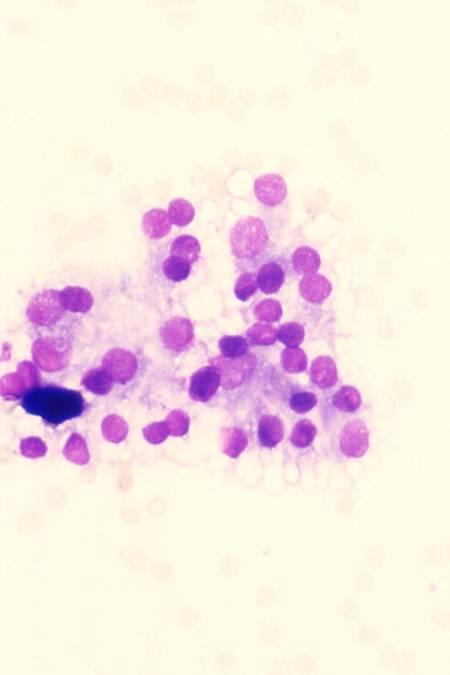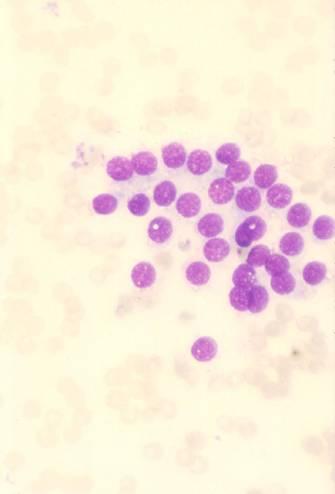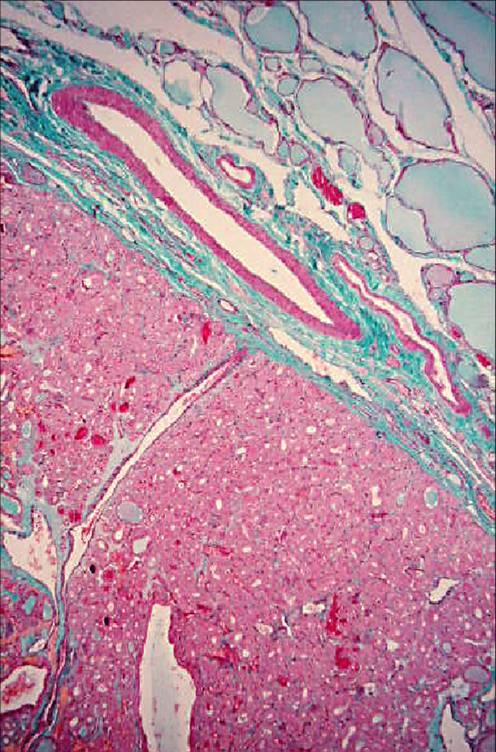This content is also available in:
English
Español
Čeština
Magyar
Diagnostyczne cechy cytologiczne
- ma?a lub ?rednia ilo?? komórek
- komórki wykazuj? kohezj?
- dominuj?ce struktury drobnop?cherzykowe
- podobne do siebie komórki, le??ce w równych odst?pach
- j?dra okr?g?e, chromatyna drobnoziarnista
- sk?pa lub miernie obfita cytoplazma
- pojedyncze makrofagi
- nagie j?dra
Koloid jest zazwyczaj obfity, w postaci amorficznych kropel lub prze?roczystej b?onki z ba?kami powietrznymi i liniowymi szczelinami.
Cz??? ?agodnych zmian p?cherzykowych jest ubogokomórkowa i nawet ogniskowo mo?e wykazywa? atypi?. Niekiedy mog? by? obecne komórki wrzecionowate, reprezentuj?ce zarówno odczynowe elementy pod?cieliskowe jak i uszkodzone komórki p?cherzykowe zwi?zane z polami zwyrodnienia torbielowatego. Mog? równie? wyst?powa? ogniskowo komórki Hurthle’a. Je?eli wyst?puj? pojedyncze mikrop?cherzyki i ogniskowa atypia, powinno by? postawione rozpoznanie guzka ?agodnego nawet, gdy rozmaz jest bogato komórkowy. Pacjent z takim rozpoznaniem powinien by? kontrolowany w odpowiednim odst?pie czasu.
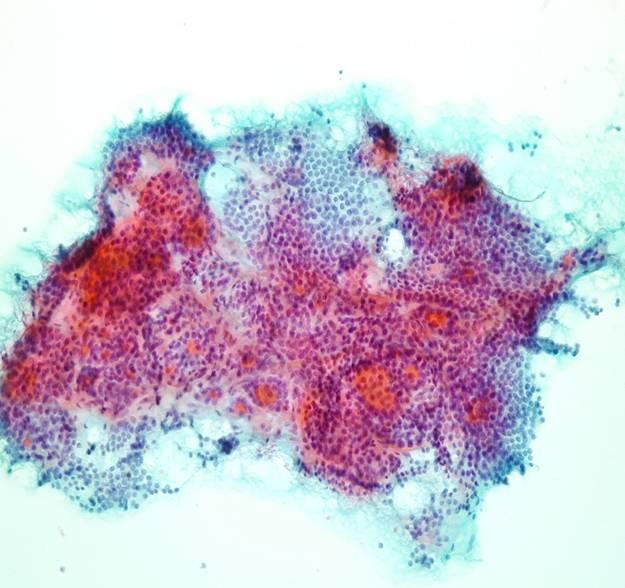
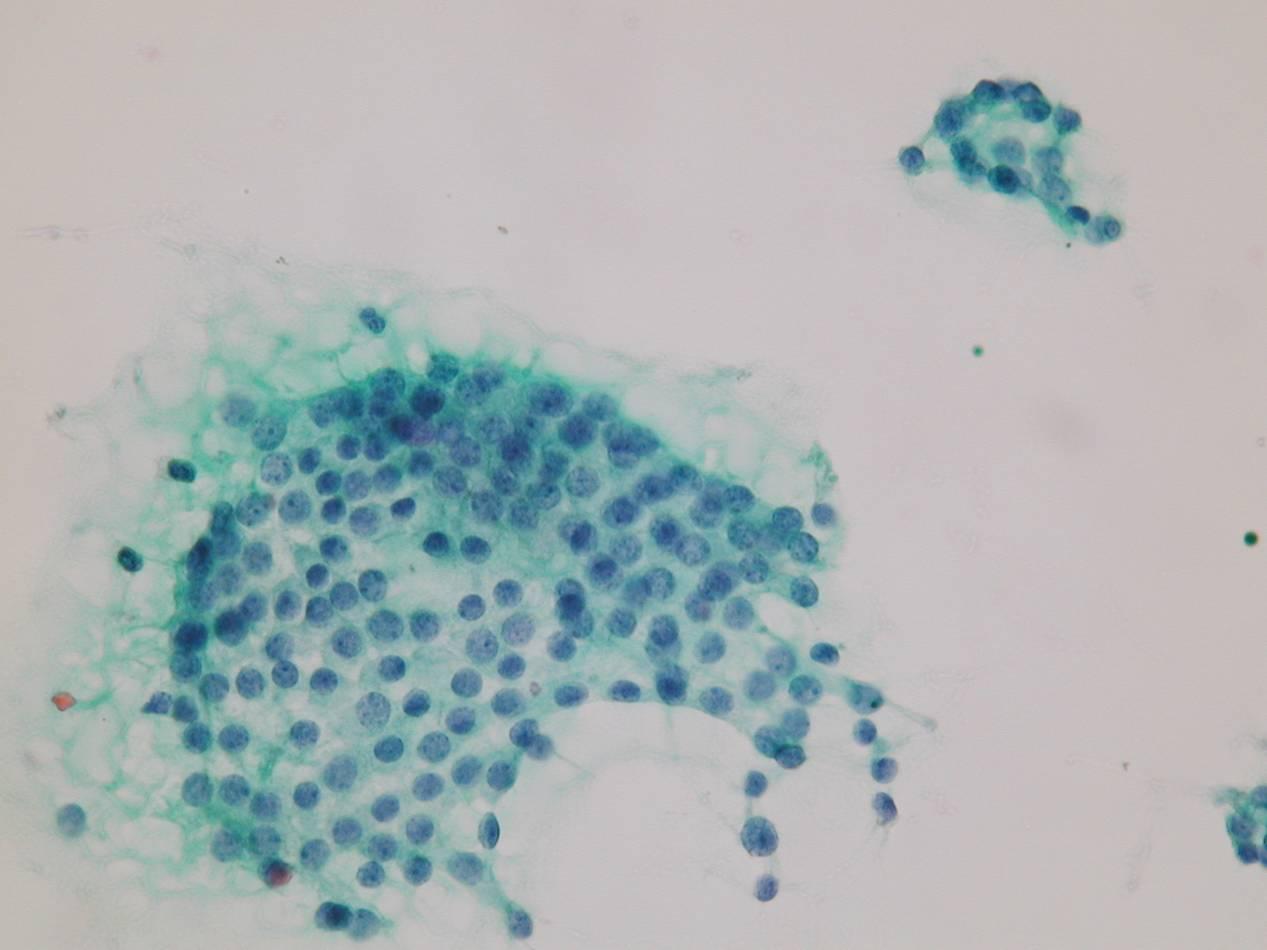
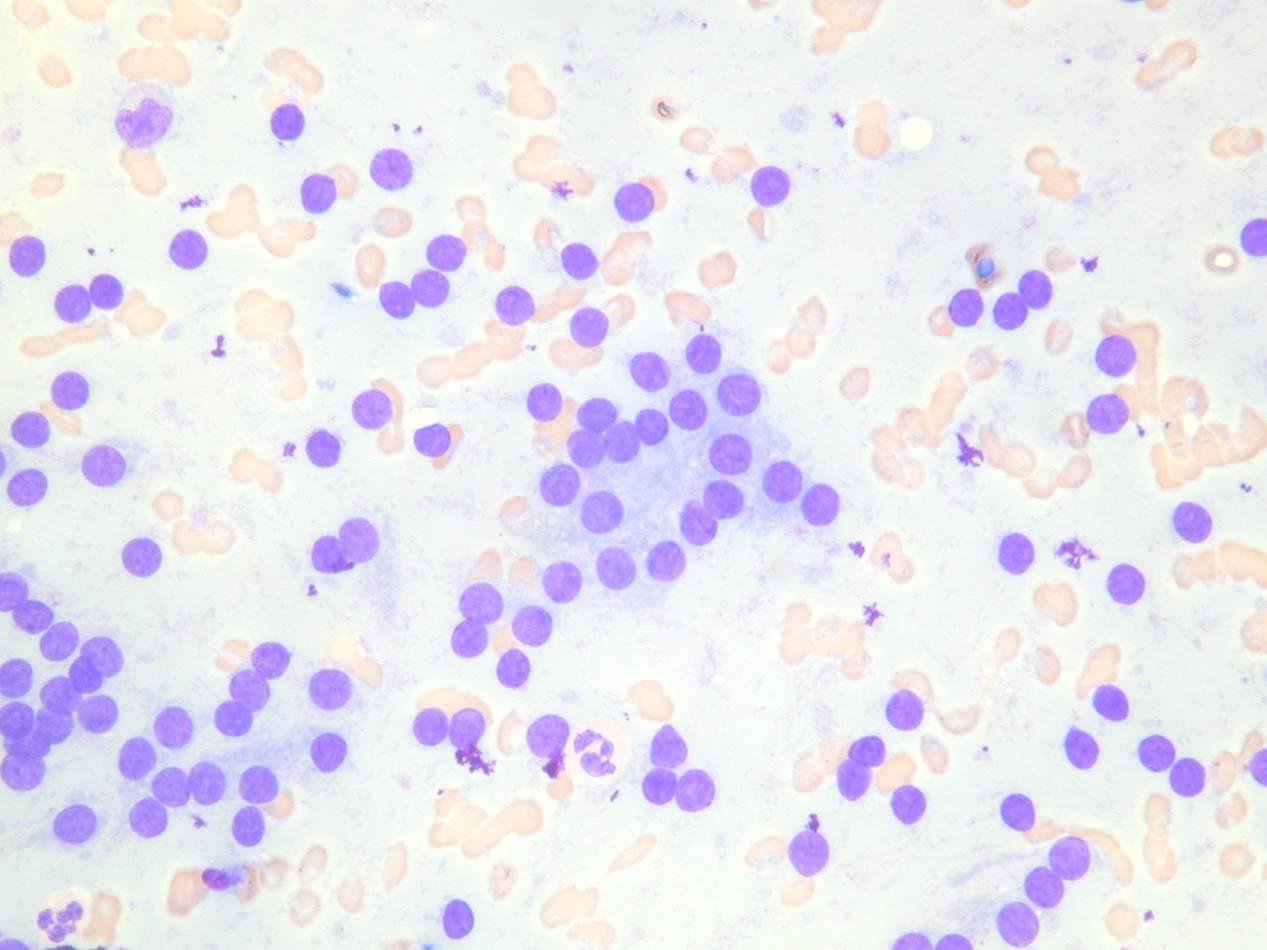
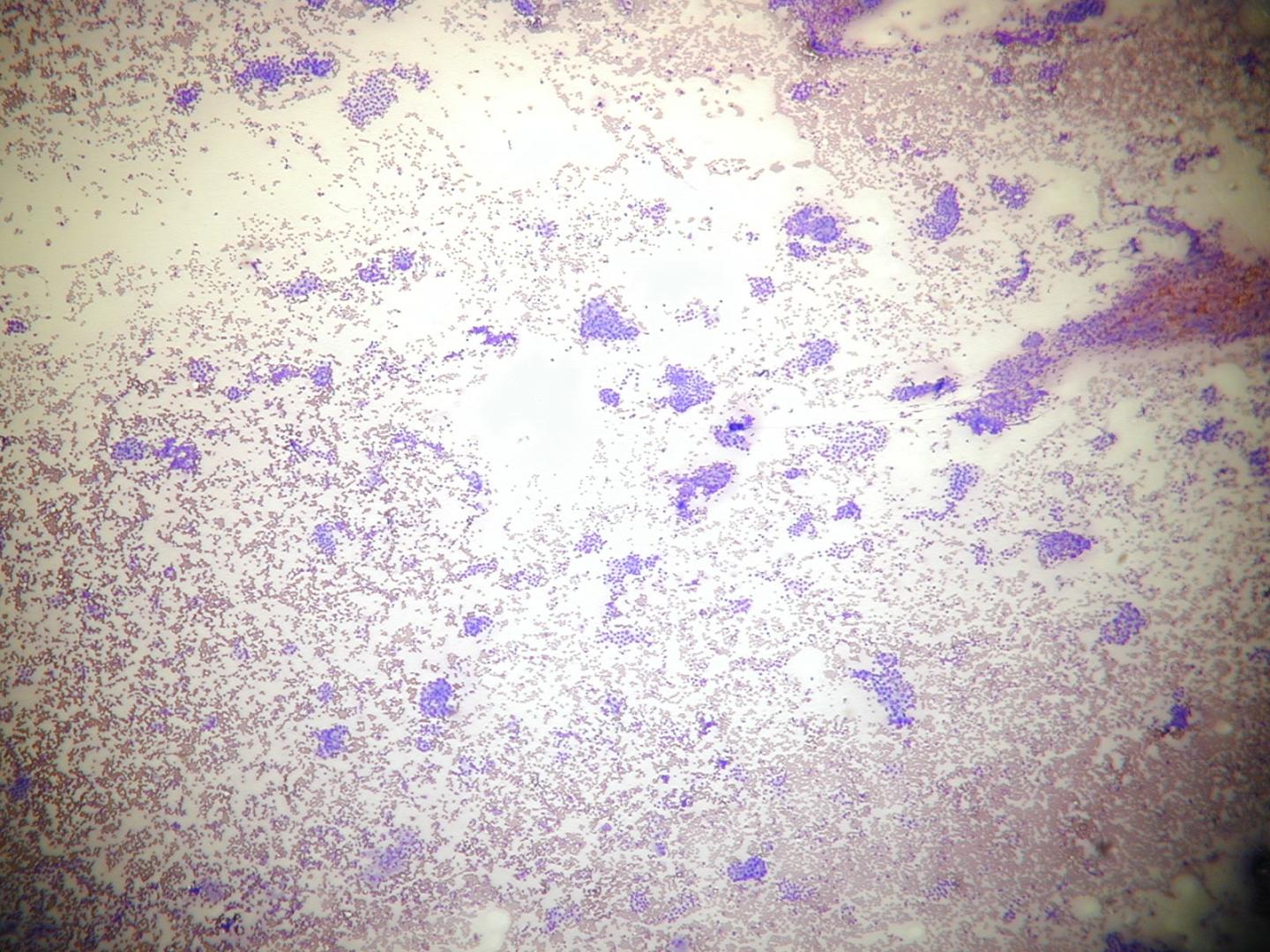




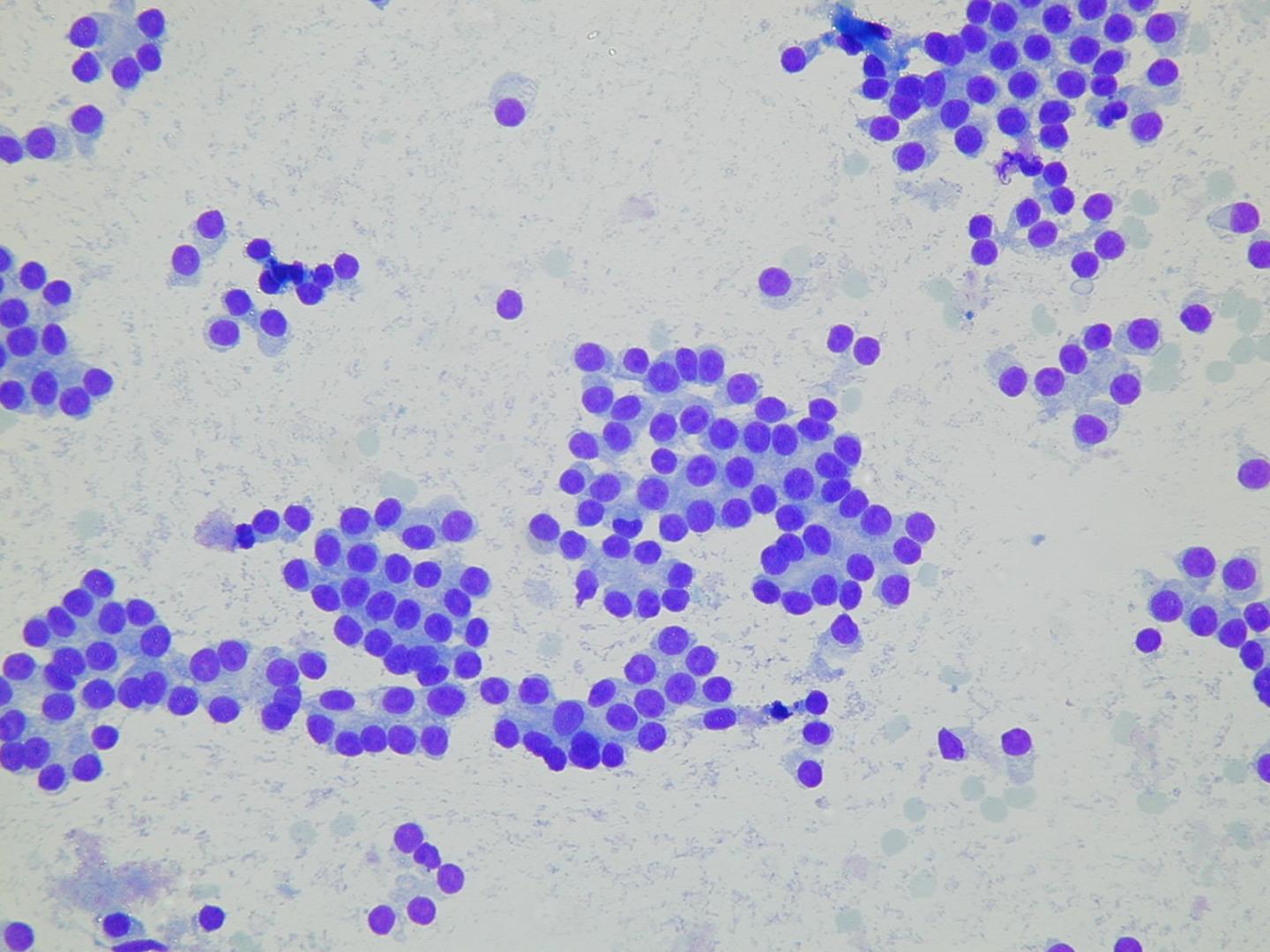
A microfollicular pattern:
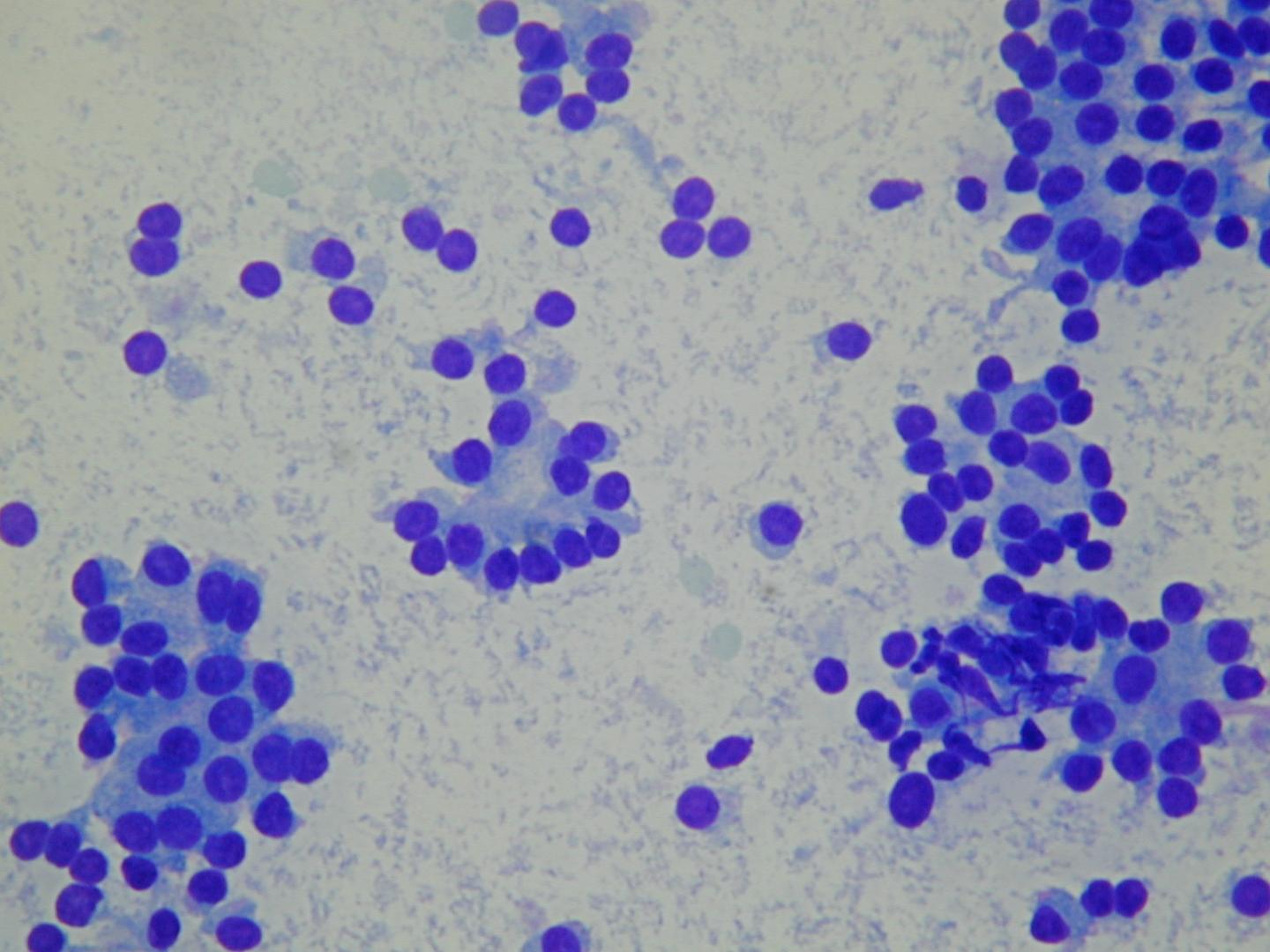
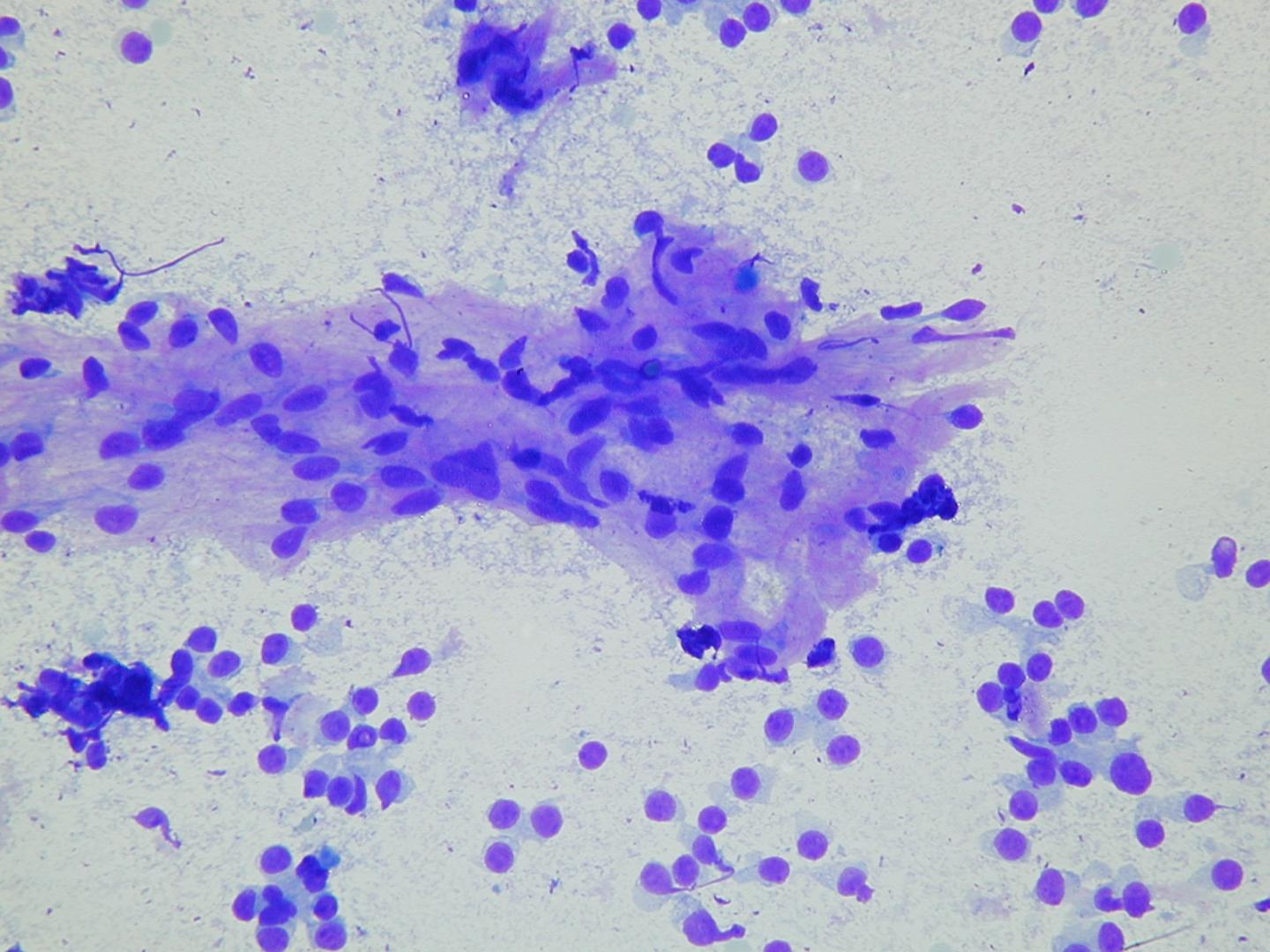
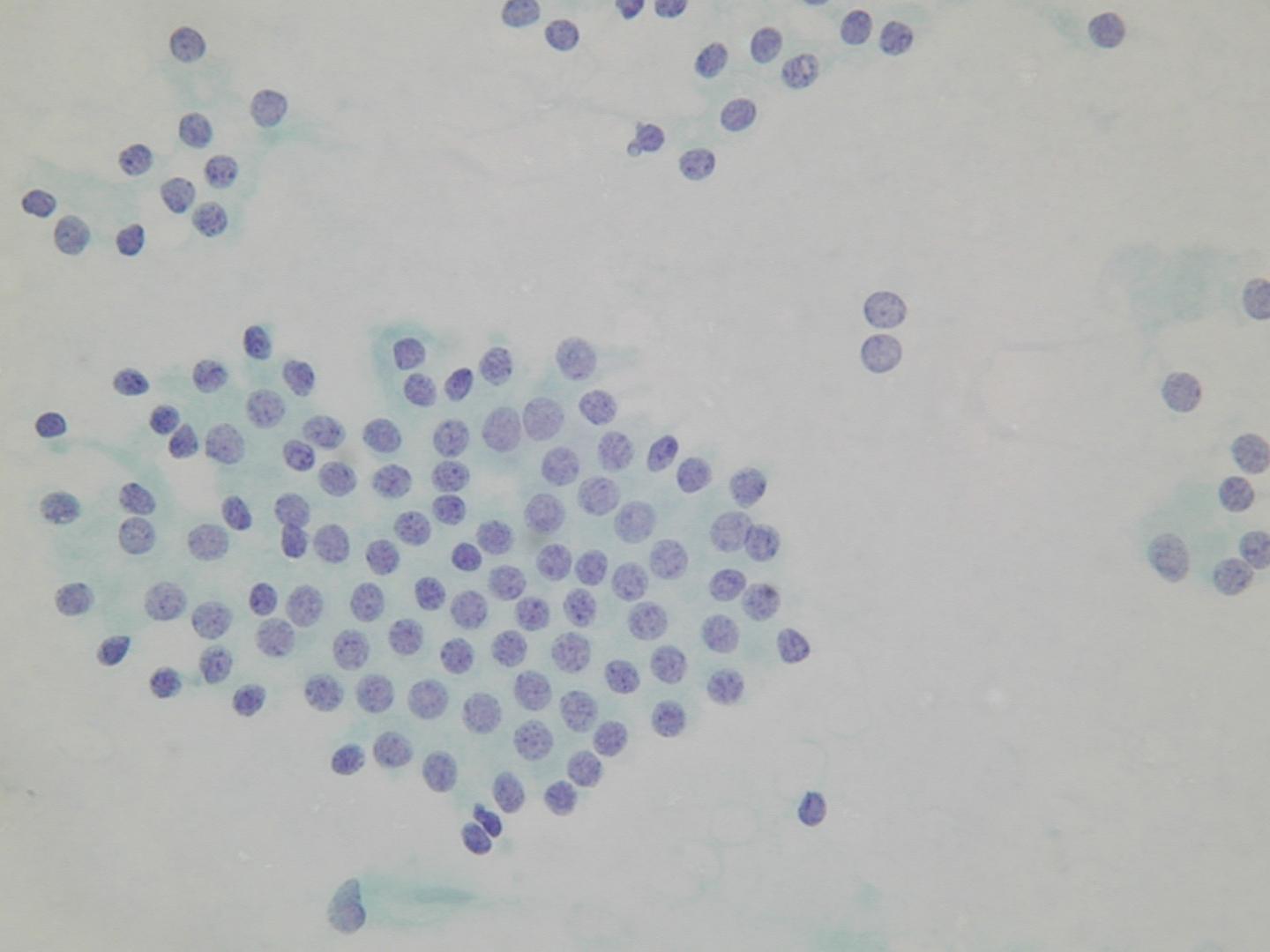
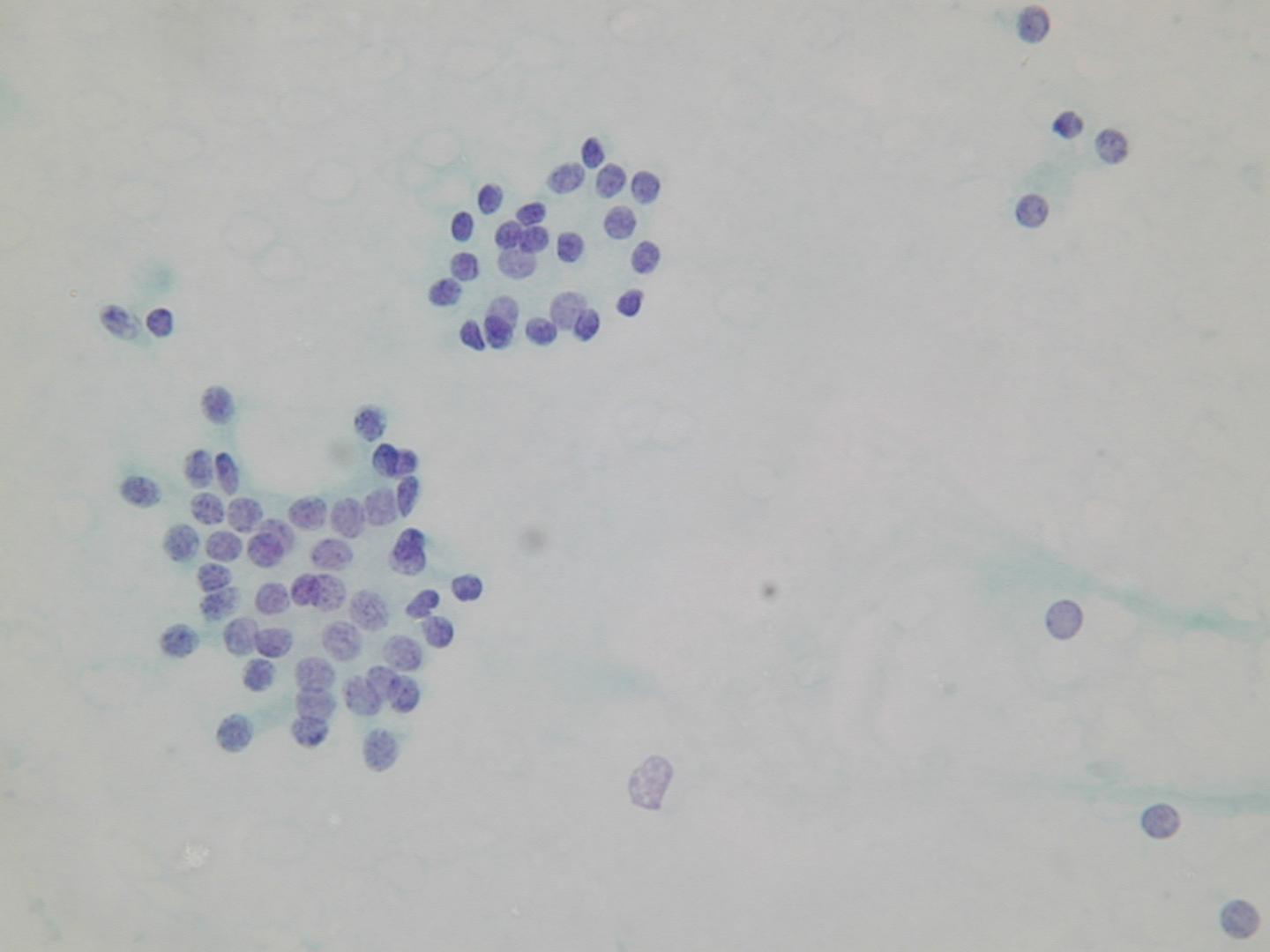
Follicular adenoma
It is a benign neoplasm, presenting as a single nodule, usually not greater than 3 cm in diameter. Some of them can produce thyroid hormones and consequently cause hyperthyroidism (functioning or ‘hot’ adenomas). The hystologic pattern may vary: macrofollicular (composed of large follicles filled with colloid), microfollicular (with smaller follicles), trabecular (with follicular cells arranged in ribbons).
Classification (no prognostic significance):
- simple
- microfollicular
- trabecular
- oxyphil
- atypicalpapillary
- signet ring cell
| Nodular hyperplasia | Follicular neoplasia |
|---|---|
| multiple | solitary |
| poorly encapsulated | encapsulated |
| architectural heterogeneity | uniformity of the architecture |
| cytologic heterogeneity | cytologic homogeneity |
| comparable areas in adjacent gland | different from surrounding gland |
| no compression of surrounding gland | compression of surrounding gland |
Microfollicular groups:
